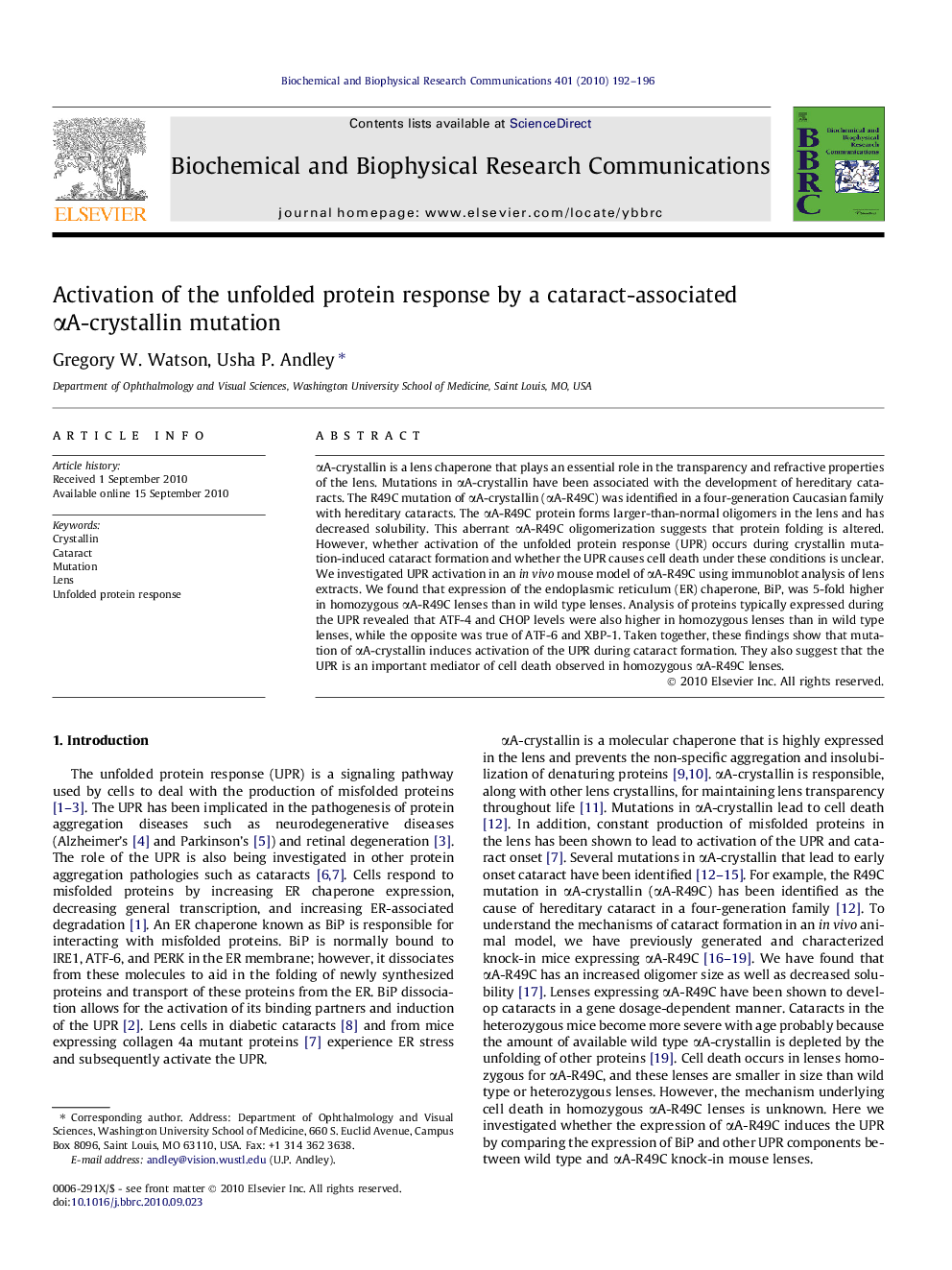| کد مقاله | کد نشریه | سال انتشار | مقاله انگلیسی | نسخه تمام متن |
|---|---|---|---|---|
| 1931048 | 1050540 | 2010 | 5 صفحه PDF | دانلود رایگان |

αA-crystallin is a lens chaperone that plays an essential role in the transparency and refractive properties of the lens. Mutations in αA-crystallin have been associated with the development of hereditary cataracts. The R49C mutation of αA-crystallin (αA-R49C) was identified in a four-generation Caucasian family with hereditary cataracts. The αA-R49C protein forms larger-than-normal oligomers in the lens and has decreased solubility. This aberrant αA-R49C oligomerization suggests that protein folding is altered. However, whether activation of the unfolded protein response (UPR) occurs during crystallin mutation-induced cataract formation and whether the UPR causes cell death under these conditions is unclear. We investigated UPR activation in an in vivo mouse model of αA-R49C using immunoblot analysis of lens extracts. We found that expression of the endoplasmic reticulum (ER) chaperone, BiP, was 5-fold higher in homozygous αA-R49C lenses than in wild type lenses. Analysis of proteins typically expressed during the UPR revealed that ATF-4 and CHOP levels were also higher in homozygous lenses than in wild type lenses, while the opposite was true of ATF-6 and XBP-1. Taken together, these findings show that mutation of αA-crystallin induces activation of the UPR during cataract formation. They also suggest that the UPR is an important mediator of cell death observed in homozygous αA-R49C lenses.
Research highlights
► αA-crystallin is highly expressed in eye lenses. The mutation arginine 49 to cysteine in αA-crystallin causes hereditary cataracts.
► We investigated whether the unfolded protein response (UPR) was activated in αA-R49C mutant mouse lenses.
► We found that ER chaperone, BiP, was 5-fold higher in homozygous αA-R49C lenses than in wild type lenses.
► ATF-4 and CHOP levels were higher in homozygous lenses, but levels of ATF-6 and XBP-1 were reduced.
► These findings suggest that the UPR is an important mediator of cell death observed in homozygous αA-R49C lenses.
Journal: Biochemical and Biophysical Research Communications - Volume 401, Issue 2, 15 October 2010, Pages 192–196